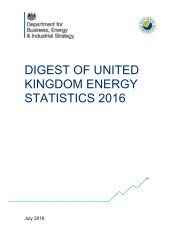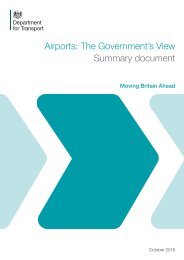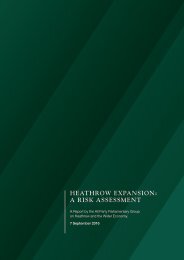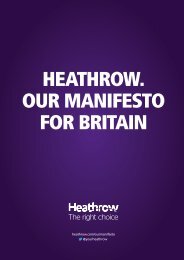20131211-2013.12Reports
20131211-2013.12Reports
20131211-2013.12Reports
Create successful ePaper yourself
Turn your PDF publications into a flip-book with our unique Google optimized e-Paper software.
The ATSU, in consultation with the radar manufacturer, reported that the unknown<br />
paramotor was too small in terms of radar cross-section, and was travelling too slowly to<br />
be displayed by Southend Radar. The radar processing system ‘tracker’ filter removes raw-radar<br />
plots having a speed below 40 knots in order to reduce the false alarm clutter. The calculated<br />
ground speed of the unknown contact was 27 knots. The Southend radar detection system is<br />
approved and compliant with the requirements of CAP670 ATS Safety Requirements.<br />
Following increased operations from Southend since April 2012, London Southend Airport has<br />
undertaken a formal consultation (conducted between 20 September 2013 to 19 December 2013)<br />
to seek to re-establish Controlled Airspace around Southend Airport.<br />
ATSI Analysis: The A319 was in receipt of a Deconfliction Service; a surveillance-based service<br />
under which controllers will provide surveillance-derived traffic information. However, the<br />
avoidance of other traffic is ultimately the pilot’s responsibility and the provision of the service is<br />
constrained by the unpredictable nature of the environment.<br />
Because of the paramotor’s small radar cross-section and slow speed it was not displayed by the<br />
Southend Radar system. As a result there was no specific surveillance-derived information<br />
regarding the paramotor, and the Southend Radar controller was not able to provide tactical<br />
deconfliction advice or warning to the A319 pilot.<br />
Within Class G airspace, regardless of the service being provided, pilots are ultimately responsible<br />
for collision avoidance<br />
Summary<br />
The Airprox occurred at 0836:58, 8.4nm south-west of Southend Airport, within Class G airspace,<br />
between an A319 and an untraced paramotor. The unknown paramotor was too small and too slow<br />
to be displayed by the Southend Radar system and, in the absence of surveillance-derived<br />
information, the Southend radar controller was therefore unable to provide any deconfliction advice.<br />
PART B: SUMMARY OF THE BOARD'S DISCUSSIONS<br />
Information available included a report from the crew of the A319, transcripts of the relevant RT<br />
frequencies, radar photographs/video recordings, a report from the air traffic controller involved and a<br />
report from the ATC operating authority.<br />
The Board noted that the Airprox occurred in Class G airspace, for which see-and-avoid was the<br />
primary method of collision avoidance. Both aircraft were equally entitled to be in that location, and<br />
therefore the pilots shared equal responsibility for collision avoidance. Notwithstanding, the Board<br />
observed that the paramotor pilot had probably been unwise to position himself at 2000ft so close to<br />
the approach track for Southend’s active RW06, and at a location which would have been frequented<br />
by aircraft routing to Southend for IFR approaches. The gliding member concurred, and opined that<br />
the positioning of the paramotor possibly indicated a low-level of aviation awareness by its pilot.<br />
Unfortunately, because the paramotor pilot could not be traced, the Board were unable to explore<br />
further this aspect. As an aside, the Board also noted that the fact that the pilot had not come<br />
forward himself (after what must have been a frightening event), was an additional indicator as to his<br />
likely inexperience in aviation matters.<br />
The airline members stated that, in this case, TCAS would not have been able to provide protection<br />
because the paramotor would not have been equipped with an SSR transponder or other electronic<br />
conspicuity aid. They also commented on the difficulty of seeing such small aircraft, especially from<br />
the cockpit of a much faster moving large airliner. Noting that Southend was applying for controlled<br />
airspace to be established around the airport, the airline members also wondered how likely it would<br />
be that, given the paucity of training and regulation of paramotor pilots, they would understand the<br />
requirements of controlled airspace. Even with controlled airspace established around airfields, VFR<br />
traffic operating within and around its margins needed to understand where other traffic was likely to<br />
4







